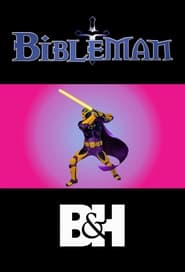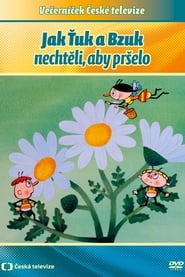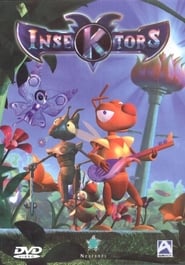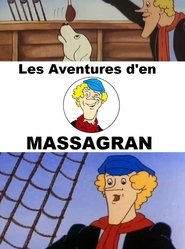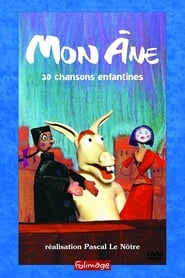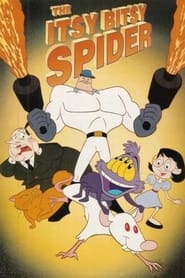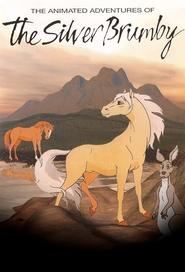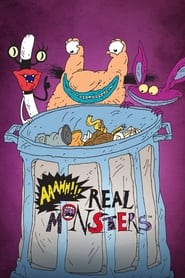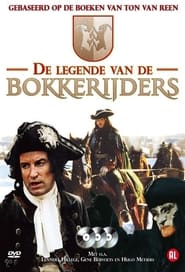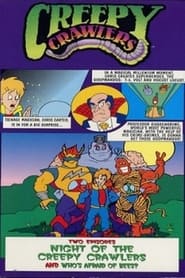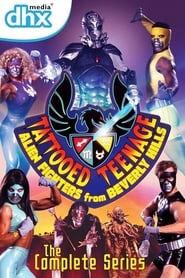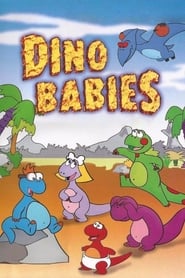New Kids TV Series on Pantaflix - Page 268
-
The Story Keepers
1995
The Story Keepers
1995
star 5Storykeepers is an animated Christian video series produced by Zondervan from 1995 to 1997 in America and Ireland. It tells the story of a Christian leader and his family's adventures living in Ancient Rome, Italy whose mission is to keep Jesus's stories alive during the 1st century. The series consists of thirteen episodes, and features two full-length movies that are compilations of the last four episodes. The introduction to each episode before the opening credits is as follows: "Rome, 64 AD. The Emperor Nero has unleashed his fury against the Christians. Their crime: Proclaiming a King higher than Caesar. Setting fire to the city, Nero places the blame on the Christians, and launches a new campaign to wipe them out. Families are separated, children left homeless, as thousands are sold into slavery or thrown to the lions. Escaping the panic of the fire, and dodging the advancing soldiers, a group of children find shelter in the gentle care of Ben and Helena; a local baker, and his wife. Here the children discov -
Bibleman
1995
Bibleman
1995
star 1Bibleman is an 1995-2010 American video series with an evangelical superhero character. The series includes videos, books and live shows, where they tour locations around North America. -
Jak Ťuk a Bzuk nechtěli, aby pršelo
1994
star 6Two little bumblebees, Bzuk and Ťuk, are worried about the weather again. It bothers them that it's raining on their meadow. And so they set out into the world again to find who is to blame. The wise bee Alka reveals many secrets of nature to the little pilgrims, and with her help the bumblebees finally understand that without the rain, everything in their beautiful meadow would have dried up and withered. -
Life with Louie
1994
Life with Louie
1994
star 6.8The 8-year-old Louie is doing his best to grow up and cope with a large family, a doting mother, a pesky little brother, and a by-the-book, military veteran dad. Add to that a slew of holiday family squabbles, a flood, an old Rambler and a huge goldfish, and you have the background for Life with Louie. Each episode is a portrait of humor and warmth drawn from Louie Anderson's real-life experience as a child in the Midwest. -
Insektors
1994
Insektors
1994
star 6.5Insektors is a 1994 French animated TV series about a conflict between two tribes of anthropomorphic insects: the Joyces and the Yuks. Made in a small studio, Fantome, in France, it was the 1994 recipient of a "Children and Young People" Emmy Award. It was directed by Georges LaCroix and Renato, and written by Eric Rondeaux, Véronique Herbaut and Marc Perrier. -
Mon âne
1994
Mon âne
1994
star 7A facetious donkey accompanies 30 traditional French songs and nursery rhymes. Handwritten text appears at the bottom of the screen. "Mon âne" is a series specially designed for small children, to learn to sing and read when you like to watch, listen and laugh. -
The Itsy Bitsy Spider
1994
star 9.8The Itsy Bitsy Spider was an animated series based on the short film of the same name. It was broadcast on the USA Network's USA Cartoon Express. The title character's voice was done by Frank Welker. -
Gullah Gullah Island
1994
Gullah Gullah Island
1994
star 7.9Ron and Natalie live on an island off the coast of South Carolina with their three children, James, Vanessa and Simeon; their niece, Shaina; and a giant tadpole named Binyah Binyah Poliiwog. Together they learn about life and culture and getting along with others. -
The Silver Brumby
1994
The Silver Brumby
1994
star 8.5The adventures of the magnificent silver colt Thowra, son of the mighty Yarraman who is destined to become king of all the wild horses. The intelligent, courageous Thowra, his brothers Storm and Arrow, and their friends the bush animals have only one enemy, the Mountain Men. The men want to capture the wild horses and take away their freedom. -
Aaahh!!! Real Monsters
1994
star 7.8Three young monsters — Ickis, Oblina and Krumm — attends an institute for monsters under a city dump and learn to frighten humans. -
William's Wish Wellingtons
1994
star 5.8William's Wish Wellingtons is an animated BBC children's television series made by Hibbert Ralph Entertainment that was first aired from 25 October 1994 to 28 November 1997. It was narrated by Andrew Sachs of Fawlty Towers fame. It was also translated into Gaelic and aired as Botannan Araid Uilleim on BBC Two Scotland during the morning. It was also shown on the American TV show Big Bag -
The Secret World of Alex Mack
1994
star 7.8The Secret World of Alex Mack is an American television series that ran on Nickelodeon from October 8, 1994 to January 15, 1998, replacing Clarissa Explains It All on the SNICK line-up. It also aired on YTV in Canada and NHK in Japan, and was a popular staple in the children's weekday line-up for much of the mid-to-late 1990s on the Australian Broadcasting Corporation. Repeats of the series aired in 2003 on The N, but it was soon replaced there. The series was produced by Thomas Lynch and John Lynch of Lynch Entertainment, produced by RHI Entertainment, Hallmark Entertainment and Nickelodeon Productions and was co-created by Tom Lynch and Ken Lipman. For home video releases, it was released under the Hallmark Home Entertainment label, making it the first Nickelodeon show not to be released by Paramount Home Video or Sony Wonder. -
Creepy Crawlers
1994
Creepy Crawlers
1994
star 3.7Creepy Crawlers is an joint-venture between American and French animated series from 1994, produced by Saban Entertainment. -
Jim Henson's Animal Show with Stinky and Jake
1994
star 9.5The show was hosted by Jake, a jovial polar bear, and Stinky, his skunk friend. Other main characters included Armstrong the Chicken Hawk, Ollie the Tapir, Bunnie Bear, Tizzy the Bee, Yves St. La Roache, Rhonda Rat, and Dullard the Aardvark. Structured as a talk show, the hosts interviewed two guest animals in each episode. The animals talked about themselves and showed clips of their real-life counterparts. -
Tattooed Teenage Alien Fighters from Beverly Hills
1994
star 8.3When four Beverly Hills teenagers are chosen to defend earth and our galaxy from the evil forces of Emperor Gorganus, they band together to form the Cosmic Knight. Selected by the kind alien Nimbar and given tattoos based on a their constellation, this team of superhero teens have the power to be transformed into Galactic Sentinels in order to fight the evil forces of Melechulah. -
Dino Babies
1994
Dino Babies
1994
star 6.3Dino Babies is a family-friendly educational cartoon spotlighting six young dinosaurs who share stories and adventures. -
Willy Fog 2
1994
Willy Fog 2
1994
star 5.1Willy Fog is again challenged by Sullivan and embarks, with his friends, in search of a secret path to the center of the Earth and the depths of the sea.
 Netflix
Netflix
 Amazon Prime Video
Amazon Prime Video
 Apple iTunes
Apple iTunes
 Apple TV Plus
Apple TV Plus
 Disney Plus
Disney Plus
 Google Play Movies
Google Play Movies
 Paramount Plus
Paramount Plus
 Hulu
Hulu
 HBO Max
HBO Max
 YouTube
YouTube
 fuboTV
fuboTV
 Peacock
Peacock
 Peacock Premium
Peacock Premium
 Amazon Video
Amazon Video
 The Roku Channel
The Roku Channel
 AMC+
AMC+
 Kocowa
Kocowa
 Hoopla
Hoopla
 The CW
The CW
 Vudu
Vudu
 Starz
Starz
 Showtime
Showtime
 PBS
PBS
 Pantaflix
Pantaflix
 FXNow
FXNow
 Tubi TV
Tubi TV
 Kanopy
Kanopy
 Comedy Central
Comedy Central
 Crunchyroll
Crunchyroll
 Microsoft Store
Microsoft Store
 Redbox
Redbox
 Sun Nxt
Sun Nxt
 ABC
ABC
 DIRECTV
DIRECTV
 Crackle
Crackle
 Fandor
Fandor
 Plex
Plex

